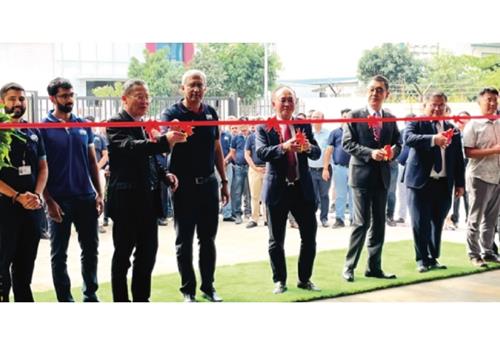Hyundai plots a speedy growth strategy in India
Hyundai Motor India is looking to introduce 1.0-litre and above turbocharged petrol and diesel engines, even as its Hyderabad R&D centre’s contribution increases.
Hyundai Motor India (HMIL) is fortifying its India strategy after new managing director and CEO YK Koo took over the reins of the company last November. Building on the pillars of aggressive product planning that will pluck out the gaps in the system, upping its local contribution of R&D for new models, and growing its sales and service facilities especially in rural India, will be the key to sustaining its growth momentum.
While unveiling the new Tucson SUV at the Auto Expo 2016, Koo outlined Hyundai’s India strategy of launching two new products every year along with refurbishes to maintain its product strength. Interestingly, HMIL has also catapulted to the third ranking in terms of global sales of Hyundai Motor Company with a 13 percent share in CY 2015, overtaking Europe by about 5,000 units.
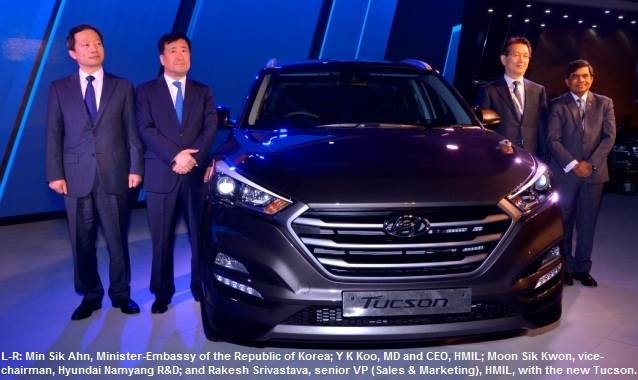
Outside of Korea, China ranks first in the pecking order with sales of over 1.1 million units and USA second with sales of 700,000 units. However, India takes the mantle of being the fastest growing market as China has been slowing down and USA is also plateauing out.
“But we are not targeting positions and are looking forward to strengthening our leadership position by sustaining the current growth rate of 16 percent achieved in CY2015 against the industry growth of around 8 percent. For this, Hyundai has to introduce more product offerings and refurbish at least two products annually. We will attack more segments like corporate sales, taxi market, rent-a-car or fleet or rural markets to acquire more customers. Hyundai’s biggest vision is three-fold – strengthen its leadership position through sustained growth, become the most beloved company in India, and realise the modern premium brand direction,” Rakesh Srivastava, senior VP (sales and marketing), told Autocar Professional.
Expanding its retail and servicing arm by penetrating and strengthening its footprint in areas where it is not present and growing its network in the rural sector which is more stable, growing and evolving will be the key. At present, HMIL has 320 outlets in the rural areas with 11 percent of its sales coming from these outlets. The carmaker is also setting up several digital showrooms to enhance customer experience in a digital way.
CRETA — A REAL GAME-CHANGER
Spearheading the product attack is its latest kid on the block, the compact Creta SUV that has garnered a market share of 20 percent in the compact SUV segment and is being branded as a modern and premium product. “For any product, the first challenge is in terms of capacity. When we brought the Creta, the compact SUV market was worth only 12,100 units with models like the XUV500, Renault Duster, Nissan Terrano, Mahindra Scorpio and the Ford EcoSport present there. We went in with 6,000 units per month with the intention of taking over about 50 percent of the market. So when you plan for selling 6,000 units a month and the balance players are selling the balance 6,000 units, that is aggressive production planning. The customer response that we have received for the Creta has been overwhelming and that is the reason why we are enhancing its capacity,” elaborates Srivastava.
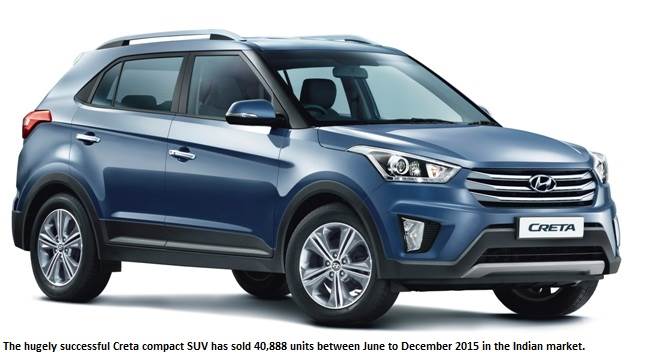
Within six months of its launch, the Creta has mustered 90,000 bookings, with supplies of 45,000 SUVs. The vehicle has a waiting period of 3 months and to lower this, Hyundai is upping the production to 10,000 units for the domestic market from June onwards. This will cut the waiting period to a month.
For exports, the Creta’s capacity is being increased to 2,500 units per month, taking up the total volume to 12,500 units. Currently the Creta’s production is below 10,000 units per month with about 7,000 units going into the domestic market and 2000-3000 units being exported.
“I think volumes will come in but the priority is to get the product right with the right communication, right variants, right size and right positioning,” adds Srivastava.
TURBOCHARGING THE FUTURE
Hyundai is also planning to bring turbocharged engines of 1.0 litres and above, both petrol and diesel, to India in the future. These were also displayed at the Auto Expo and will power both the existing as well as future crop of models. HMIL’s current engines are not turbocharged but the new ones will be high on performance-mileage and power and also meet the new Euro-VI emission norms.
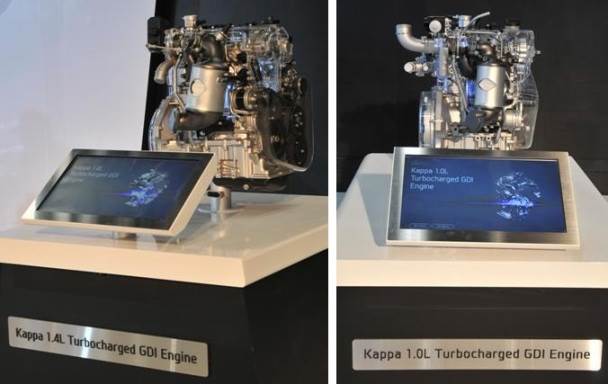
Underlining its commitment to India, the Korean carmaker has been stepping up its R&D work in India for new models. While its Hyderabad R&D Centre contributed 45 percent of the inputs for the Creta, for the concept Carlino HND14 – expected to take shape in 2-3 years – the contribution will be up to 60 percent.
The Hyderabad centre works in collaboration with the Namyang R&D Centre, Korea and has 750 engineers, the majority being Indians. They are involved in market research, vendor management, Indian customer behaviour as well as in testing and localisation of parts. The current year, therefore, promises to be an eventful one for the Korean brand in India.
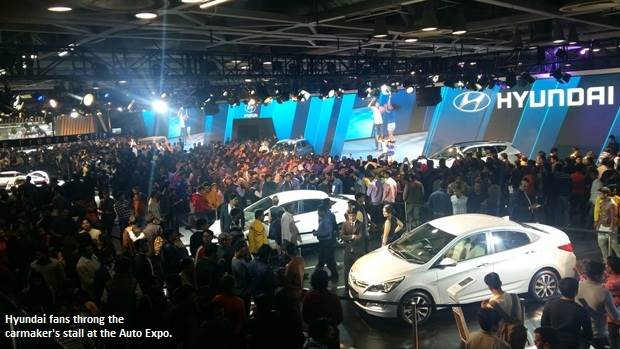
INTERVIEW RAKESH SRIVASTAVA, SENIOR VICE-PRESIDENT (SALES & MARKETING), HYUNDAI MOTOR INDIA
Hyundai Motor India has just unveiled the Tucson. What will be the strategy to market it in the growing SUV segment?
It is a global SUV of ours and fills in the wide space between the Creta and the Santa Fe. We will be rolling it out in India during the second half of the year. The product specifications and price positioning are being worked out. It will also have localised content and will be manufactured in India. What we are looking forward to is meeting the sweet spot or the price spot where the Creta ends and the Santa Fe starts.
What is the sales target in CY 2016 for Hyundai Motor India?
In CY 2015, we sold 476,001 units in the domestic market and have the capability to achieve half-a-million sales in the domestic market this year on the strength of our product range. We will be the second company in India to touch the half-a-million mark in the country. But we will achieve it faster than the earlier one. That is our strength.
Hyundai that has been No. 1 in car exports has seen some slackening. What is the forecast for CY 2016?
Exports are part of our business strategy and we have been investing in India for the last 16-17 years for it. It is also part of our global strategy.
Today Hyundai, outside Korea, has 7 manufacturing locations and we work towards meeting our export requirements. India is the small car hub for exports and at some point in time we set up a plant in Turkey; this meant the European requirements were shifted over to Turkey.
We don’t cater to Europe’s needs from India at all now. That is why some volumes have come down. In addition, other world economies where we were exporting are experiencing challenges, which is why overall exports are down. World economies have to perform well — for instance, Russia, Middle East, Brazil as well as other markets are witnessing a challenge to growth, so export requirements are thinning down. But we are confident that with our existing channel partners in these geographies and our new product offerings we should be able to sustain the momentum.
Which are the new markets towards which equations could be tilted in future?
One is that we are exploring the same markets with more products like the Creta, Accent and Elite i20.
By how much can the Chennai plant’s capacity be scaled up? I believe Hyundai is exploring the potential of setting up a new plant?
Last year we made 643,000 cars and have a production capacity of 720,000 units annually. So 80,000 units is a big capacity that’s still left to be utilised for another two years. When the time comes and the market is growing,
we will consider about setting up a new plant.
For the complete review, read Autocar Professional’s February 15, 2016 – Auto Expo Review issue
RELATED ARTICLES
Driving EV business with agility and flexibility
CEOs from the EV startup ecosystem met in Bengaluru and Pune to discuss the challenges and business opportunities.
BRANDED CONTENT: SM Auto and Gotech energy inaugurate their first battery pack assembly plant in Pune
Pune-based SM Auto Engineering (SMA), a leading automotive component system manufacturer and its partner Gotech Energy (...
Safer toys for India: Behind the scenes at Centy Toys’ factory
Autocar India explores the safety norms that govern the making of scale model cars at Centy Toys.





 By Shobha Mathur
By Shobha Mathur
 18 Feb 2016
18 Feb 2016
 13641 Views
13641 Views






